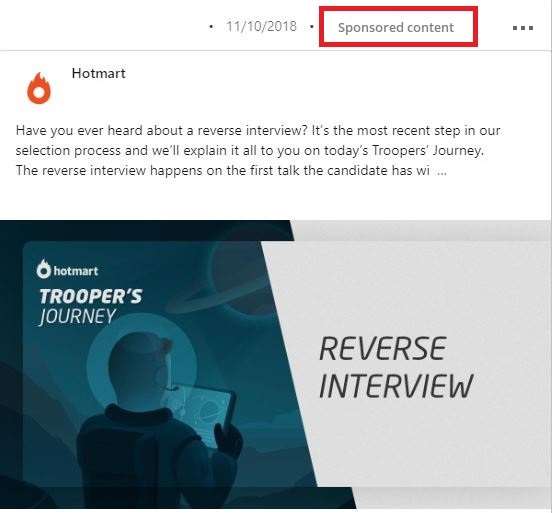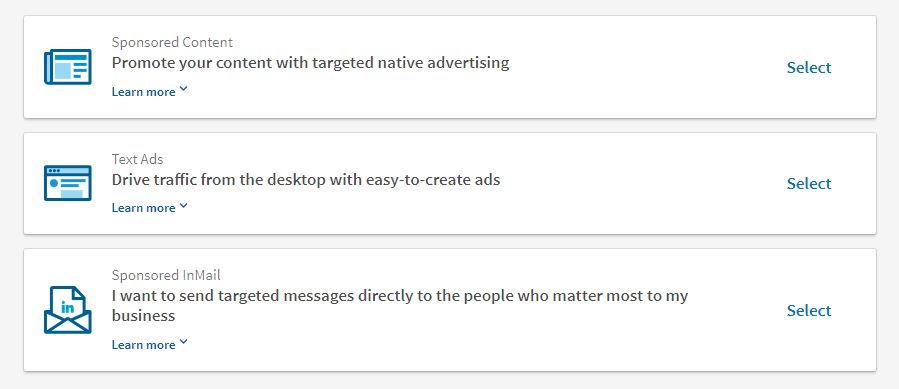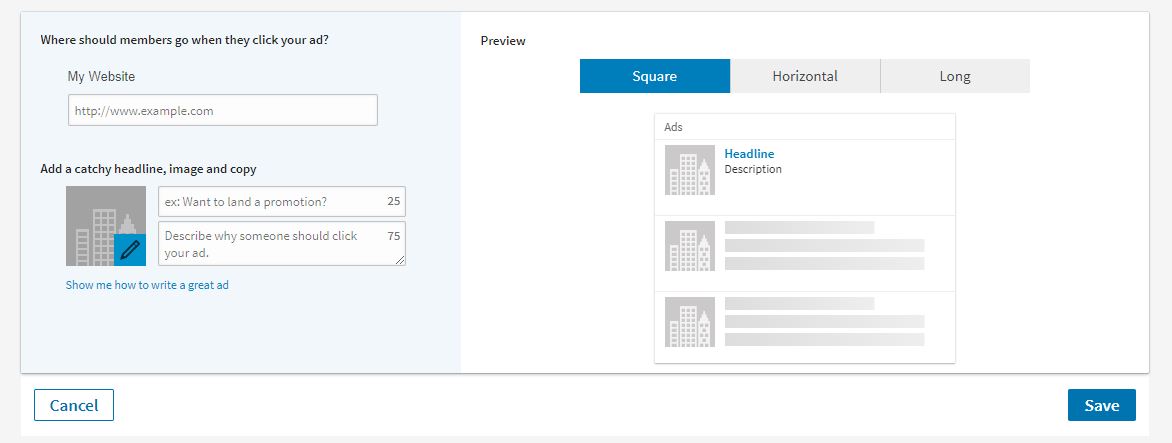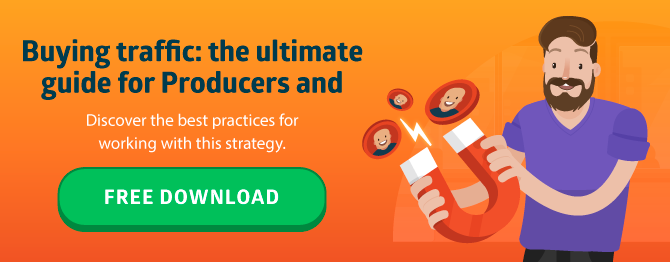
How does LinkedIn Ads work?
Practical step-by-step process to use this tool, which is key to reach a more qualified audience.

What will we see in this post
You probably know that LinkedIn, unlike other social media, is geared toward the job market. In other words, if you have a profile on this network, your main goal is not making new friends nor socializing informally with people you already know, but to:
- Make professional contacts;
- Find or offer job openings;
- Share your knowledge with technical articles;
- Interact with other professionals and companies you admire.
But did you know that in addition to all the professional interaction, it is also possible to create ads on this network to attract customers to your business?
In this post, you’ll learn more about LinkedIn Ads and how to use this tool to reach a more qualified audience.
What is LinkedIn Ads?
Like Facebook and Google, LinkedIn also has a tool where you can create and manage campaigns targeted to a specific audience known as LinkedIn Ads.
This is an essential resource for those who work with B2B (business to business), i.e., companies that sell their products to other companies. But don’t think for a second that this strategy is only beneficial for this type of business.
For example:
If you’re a career coach and have created an online course or have written an eBook about training and development of people, the best thing is to advertise it on the largest professional network, right?
After all, it’s a lot easier to sell this type of product to those who are interested in changing careers than for those who have never thought about this type of training.
With LinkedIn Ads, you can segment your audience by:
- Area of study;
- College degree obtained;
- University;
- Position;
- Sector;
- Company size;
- Level of experience;
- Location;
- Language.
This means that it is possible to create campaigns for a much more qualified audience, since you can filter your buyer persona’s characteristics.
How to use LinkedIn Ads
Before you start creating your ads, be aware that for certain types of campaigns, it’s necessary to have a Company Page, i.e., your company’s page on LinkedIn.
However, if you don’t have a page for your business yet and don’t wish to create one now, you can start advertising with your own LinkedIn profile.
Over time, if you realize that you need a Company Page, go back to the Campaign Manager and associate your account to the page you’ve created.
When you go to LinkedIn Ads, you’ll have to fill out your main information:
- Account name;
- Currency (think about the currency in which you wish to pay for your ads because this option cannot be changed later);
- Company page (optional).

Then, you can start creating your campaigns. If you haven’t associated your account to a Company Page, you’ll have 3 ad options:
- Sponsored Content
- Text Ads
- Sponsored InMail

We’ll discuss the characteristics of each one below.
1. Sponsored Content
Known as native ads, this is the most common type of ad for two main reasons:
- It’s posted directly on the LinkedIn feed;
- You can include links in your campaigns.
If your goal is to delight your potential customers with content or promote your company’s event, Sponsored Content is ideal for your campaigns.
In addition to setting up your budget and choosing between paying per clicks or impressions, it is also possible to boost your ads on your own company page.
However, in order to create this type of ad on LinkedIn Ads, it is necessary to have a Company Page. After all, Sponsored Content is used so that your brand’s message reaches the audience you wish to attract.
On your Company Page, the ads created in Sponsored Content appear as follows:
2. Text Ads
If you want to generate traffic to your website, Text Ads are the type of advertising you need to create.
Unlike Sponsored Content, which appears on the LinkedIn feed, Text Ads appear on the right corner of your page with an image and a short text.
Once you’ve selected this type of ad on LinkedIn Ads, you’ll need to inform the following:
- Website address to which users will be directed when they click on your ad;
- Add a title with up to 25 characters, a text with up to 75 characters and an image for the campaign;
- Choose the viewing format: square, horizontal or wide.

An advantage of Text Ads is that you’ll only pay for the ads that work, either per click or per impression.
3. Sponsored InMail
Sponsored InMail is ideal for sending customized messages to your audience. This is because, instead of running your ads on the feed, they are delivered directly to each person’s inbox and only when they are online.
If you already know the importance of email marketing and use this strategy to nurture your audience, you will certainly be able to use Sponsored InMail.
It’s possible to conduct A/B tests and thus, understand which types of messages are more pleasing to your audience.
When you create your ad, don’t forget to select the path your audience should follow:
- Direct people to the website or content
- Capture leads with LinkedIn lead generation forms

In addition to these 3 most common types of ads, LinkedIn Ads also offers:
Dynamic Ads: Ideal for creating brand awareness and attract more users to your Company Page.
Video Ads: Ads released in video format (created through Sponsored Content).
Carousel ads: Also done through Sponsored Content, you can tell a story with image carousels.
Programmatic media: You segment your audience by aims or identity and purchase the programmatic advertising. This way, your ads are shown in Display Ads at a fixed price.
What are the advantages of advertising on LinkedIn Ads?
Now that you understand how each type of LinkedIn Ad works, you might be wondering if you should use this social network to create campaigns.
We’ve set aside the main advantages of using this tool:
1. The right audience
As we’ve already mentioned in this post, by using LinkedIn Ads you can reach a much better-prepared audience, especially if your product is aimed at the job market and the professionalization.
By segmenting your audience with all the characteristics related to your professional field, you’ll be able to reach it more accurately.
2. Ideal location
Also, regarding someone who has created an online course for the professional development of other people, LinkedIn is the ideal place to advertise your product.
By advertising on this social network, it’s possible that the purchase journey will be even shorter, since people who receive your ads may be ready to decide on purchasing what you’re offering straight away.
You might even be able to minimize your product advertising efforts. This is because you won’t have to show your potential customers that they have a problem, since they probably know that they need to specialize or develop a given aspect of their career.
3. Metrics
With Conversion Tracking, you can measure all of your campaigns in LinkedIn Ads.
You can understand the number of leads that your ads have generated and your campaign’s ROI. With this, you can improve your ads and thus, achieve the expected results.
Do you want to promote your product?
We are aware that not everyone uses LinkedIn, let alone create campaigns on this social network.
However, as you’ve seen here, it is possible to use LinkedIn Ads and advertise your business to an audience that you probably never thought to approach.
It’s true that the amount invested in LinkedIn ads are a little higher than Facebook and Google campaigns. But as you’ve probably noticed, LinkedIn’s audience is better prepared and that’s exactly why it can be a good strategy in order to reach a qualified audience.
Of course that, in addition to LinkedIn Ads, there are other ways to advertise your business. If you wish to learn more about them, make sure to read our post with 11 marketing strategies to attract more customers.





